Littleleaf European Linden
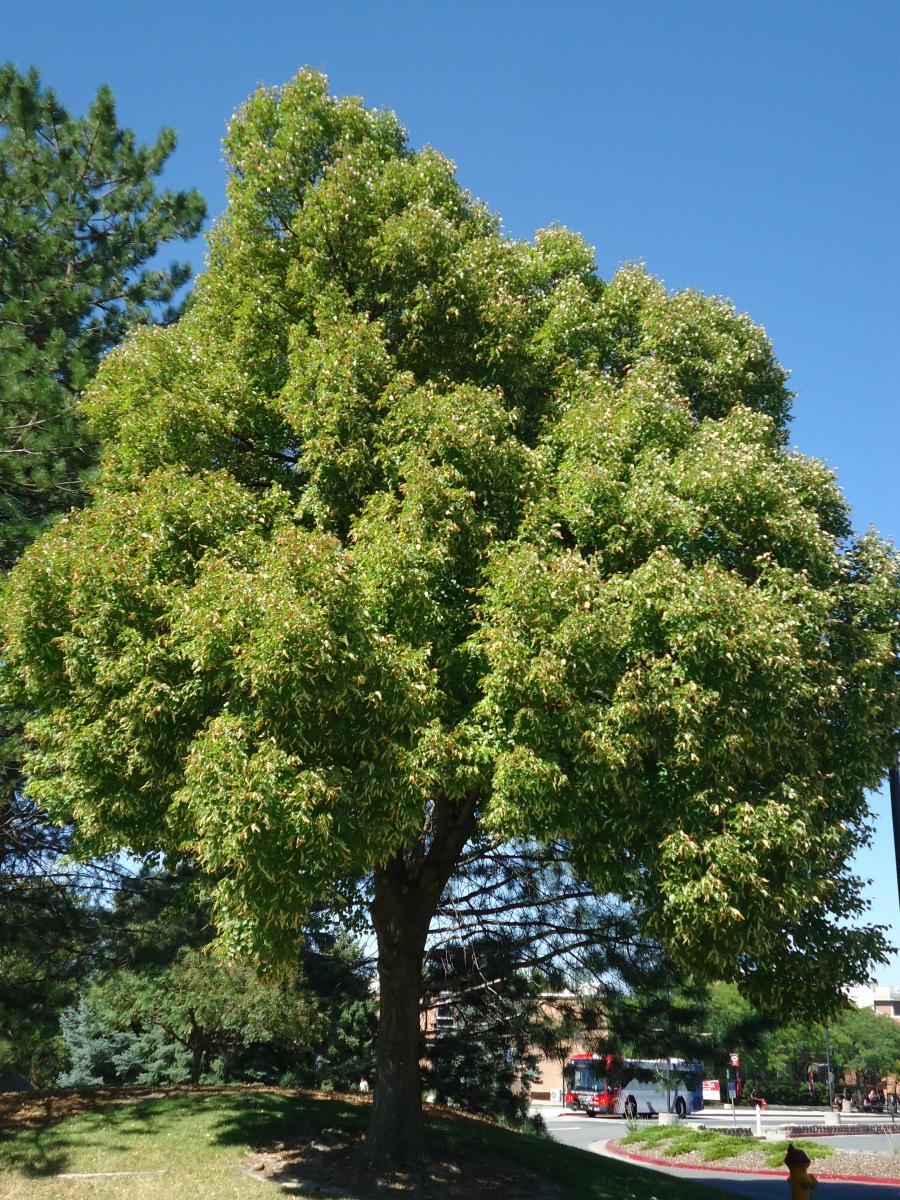

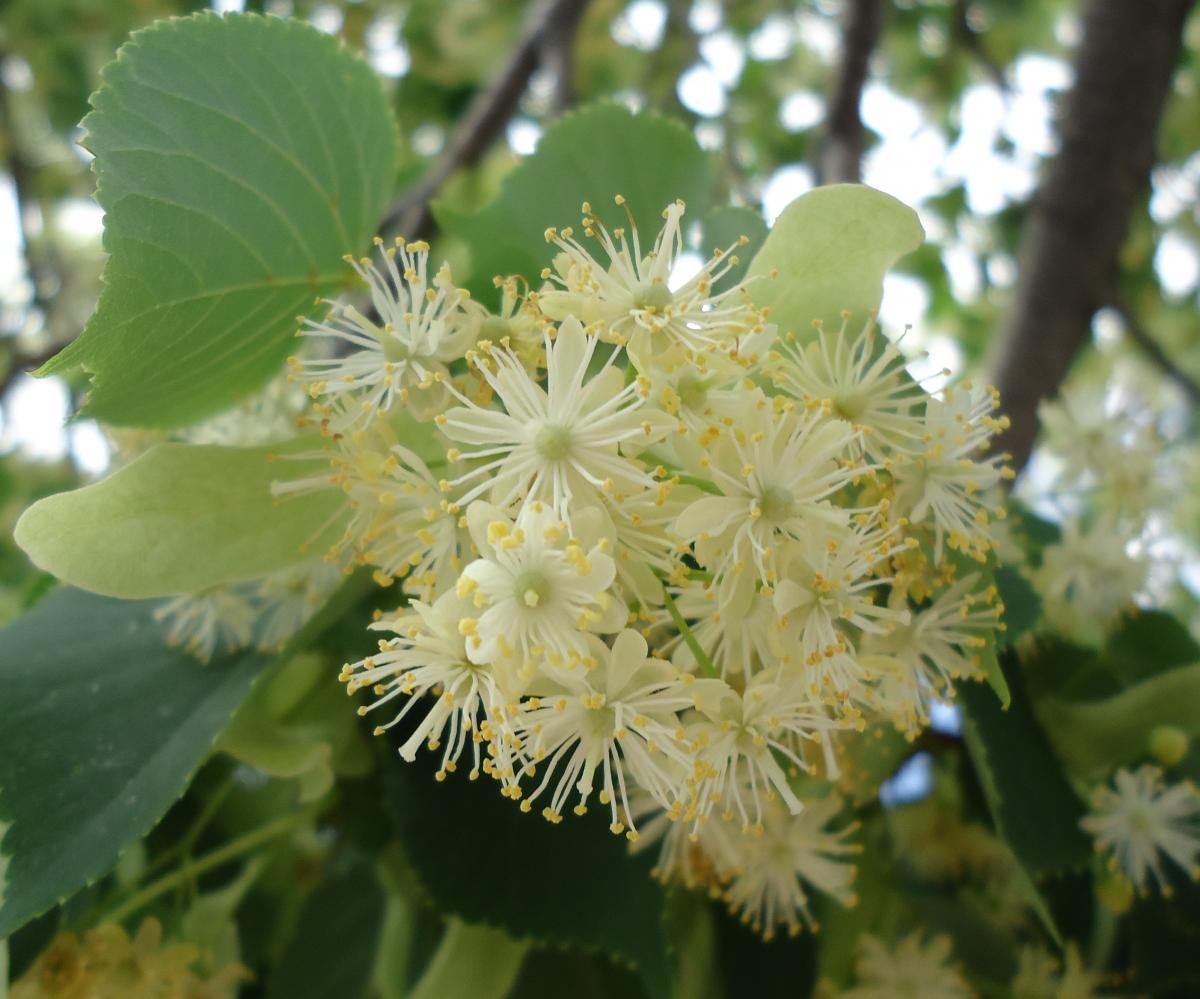
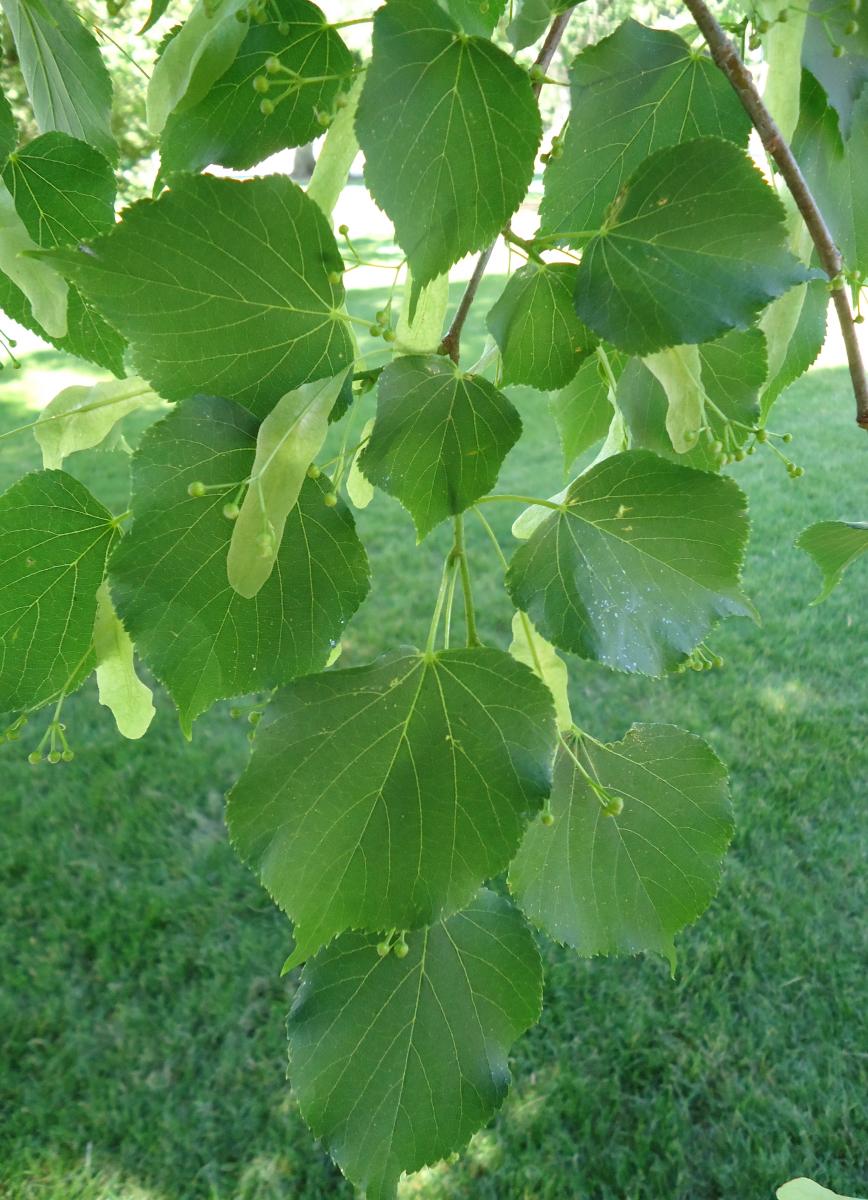
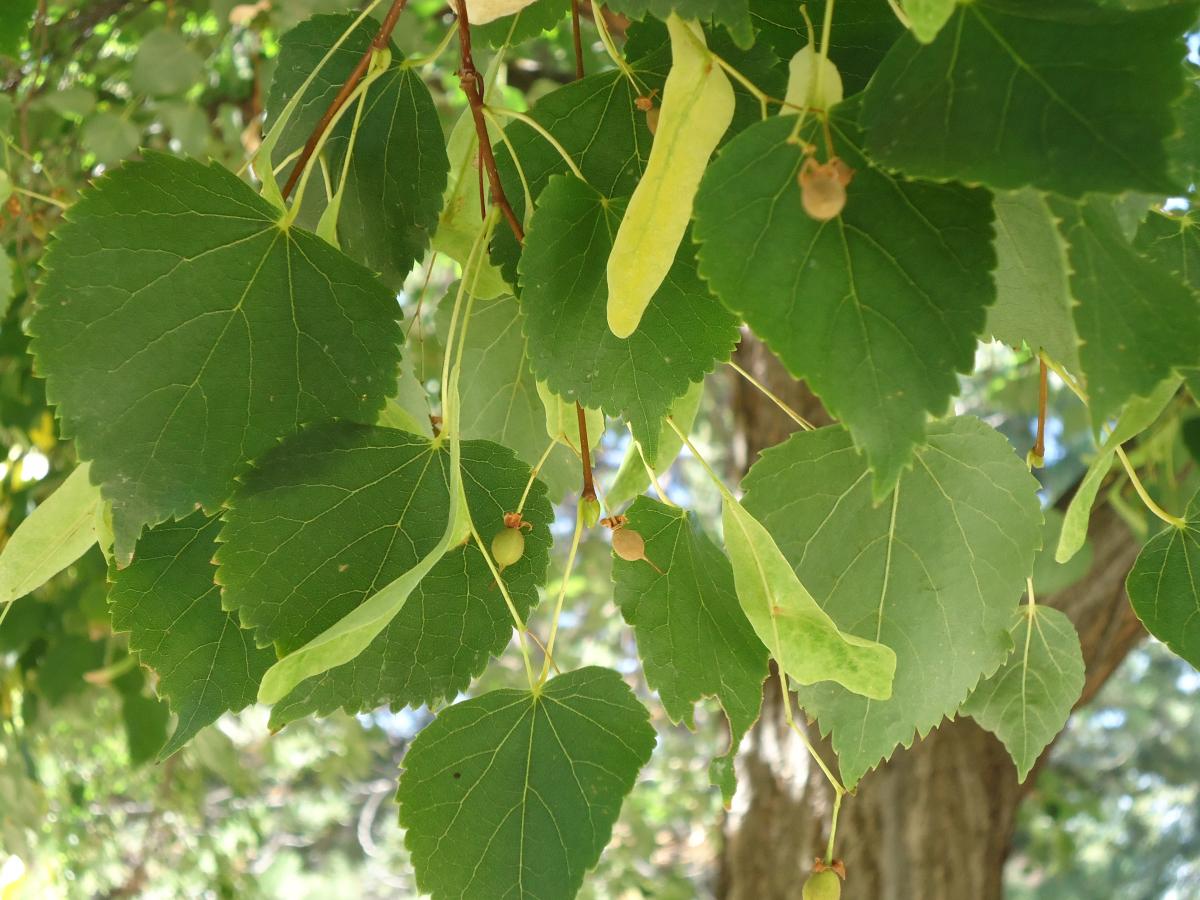
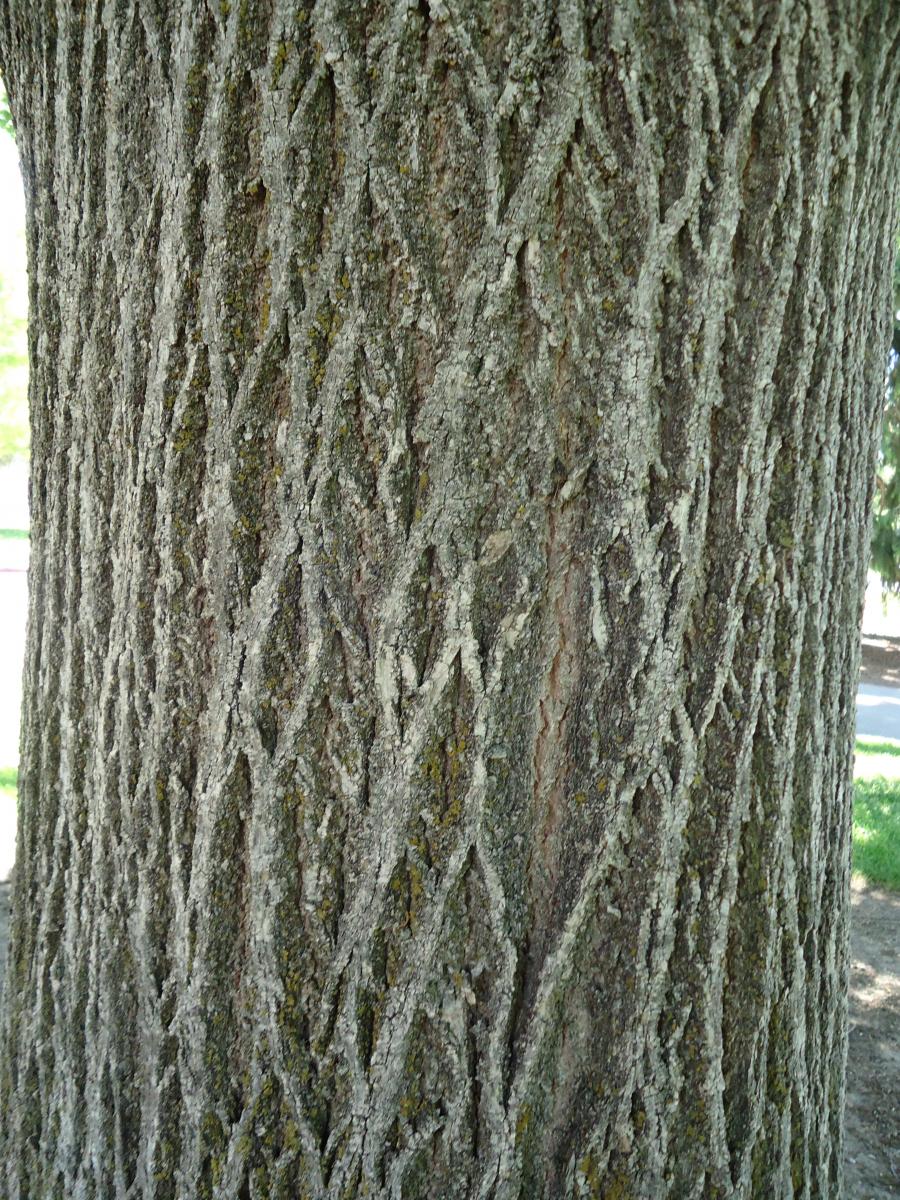
Tilia cordata
Leaves: Deciduous. Leaves are 1½ to 3 inches long and are in the shape of a slightly lopsided, irregular heart with a serrated outline. The point is long and drawn out. Dark green color in summer. Yellow-green to yellow fall color.
Bark/Twigs: Brown-grey bark, somewhat textured with narrow, scaly ridges.
Flowers/Fruit: Several small yellow flowers grow in a small cluster attached to a green, curved bract that will dry to light brown. Flowers are not very showy, but incredibly fragrant and loved by bees. Blooms in early summer (June to July). Flowers develop into small, brown nutlets (usually groups of 2 to 3) that spin to the ground with the dried bract when mature. Bracts often hang onto the tree through the winter.
Mature size and shape: Large. 40 to 60 feet high x 20 to 30 feet wide. ½ to ⅔ in spread. Pyramidal shape in youth, upright oval to pyramidal-rounded and densely branched in old age. Stays quite symmetrical.
General information/special features: Plant in full sun to partial shade. Prefers moist, well-drained soil, and is not exceptionally drought tolerant. More tolerant of heat and compact soil than the American Linden. Does well in rough city conditions. Quite pollution tolerant.
Landscape use and maintenance: Good shade and street tree for residential areas. Often used in urban settings along streets or in parking lots. Medium growing rate. High maintenance. Flowers and seeds can be messy. Aphids are a common problem, creating a sticky substance on leaves. Readily transplanted.
USDA Hardiness Zone: 3 to 7
Family/Origin: Tiliaceae – Linden. A European native which has been naturalized in U.S. known in the UK as a lime tree (not to be confused with the citrus lime)
Campus Use: Common. Can be found in President's Circle and northeast of Biology (Bld 84).
